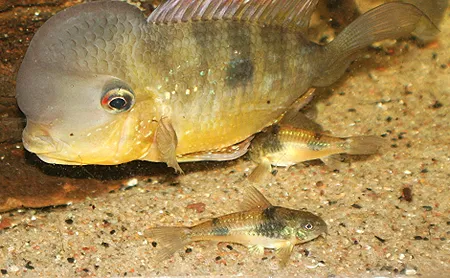How can i select the fish from that list that can survive the climat in Belgium?
Find out what fish from the list you can order (from an importer) or what your fish store can order.
How can i select the fish from that list that can survive the climat in Belgium?



Thanks for posting that; very interesting! Quite a few species listed on there that I found surprising. Piranhas, Black Ghost Knife, way more Gymnogeophagus species than I realized, tons of catfish/plecos, Motoro rays, etc. Makes you wonder what else could be kept in cooler tanks than we normally expect.
My local retailer/importer has an "ill-tempered" 24-inch-plus Jau catfish, and that's on the Uruguay list. Maybe in my outdoor pond year-round?
I will tell you that for me personally a paradigm shift in how I keep fish has been setting the heater for 62 degrees on my Uruguay fish and Central Americans my building has (now) tons of natural light and no AC so it gets plenty warm in the summer, and most of the fish are outside anyway in the summer. I’m tired of fragile fish. Can’t stand the idea that a fish is supposed to live its entire life at 76-78 or whatever and that temperature swings are stressors. Fake fish. All my fish see temperature swings day to night year round now and I only leave the lights on for a couple hours after it gets dark so I can enjoy the lit tanks in a dark room but their day night cycle is pretty close to the natural one where I live. This year the Uruguay tanks will have no heat, The fish outside overwintered without issue here in coastal Ga lowest water temp I recorded was 38. Even my Costa Rican fish have been down to 54 (water) for 2 nights
"Paradigm shift" is certainly not overstating it. I think back to when I started in the hobby, and "tropical fish" were often thought of as just that: purely tropical. Temps simply "had" to be maintained at a constant 78F or you were doomed to failure. Common sense tells you how silly that sounds...but that was the way much of the literature and common wisdom told us to think. I modified my ideas over the years but it's only been the past 5 years or so that I have done much thinking along the lines of copying the natural yearly rhythms of light and temperature.
It's pretty wonderful to watch the colouring-up and heightened intraspecific interactions in Amecas, Gymnos, Jordanellas and others as the thermometer creeps back up into the high 60's.
But...I admit that when my G.rhabdotus were outside in 50F water last year, I was very anxious when I drained that pond the next week to take them inside for the winter. My wife is still laughing about my incredulous "Holy crap...they're alive!!!" as those lovely bespangled fish emerged in the net.
Not just alive... but doing great, I'd imagine.
What's interesting about Uruguay is that while there are seasonal temperature changes, there really isn't a rainy season the way that there is in Amazonia. The key to breeding many of the fish from there is to mimic the natural rain and drought cycles (e.g. don't do water changes for a bit... and then do a big one with rain water).
I'm hoping to coax a pair of Uruguayan pikes to spawn by adding more current (and food) ... like it's spring. Colored up, fat and feisty but no eggs - at least that I can find.


